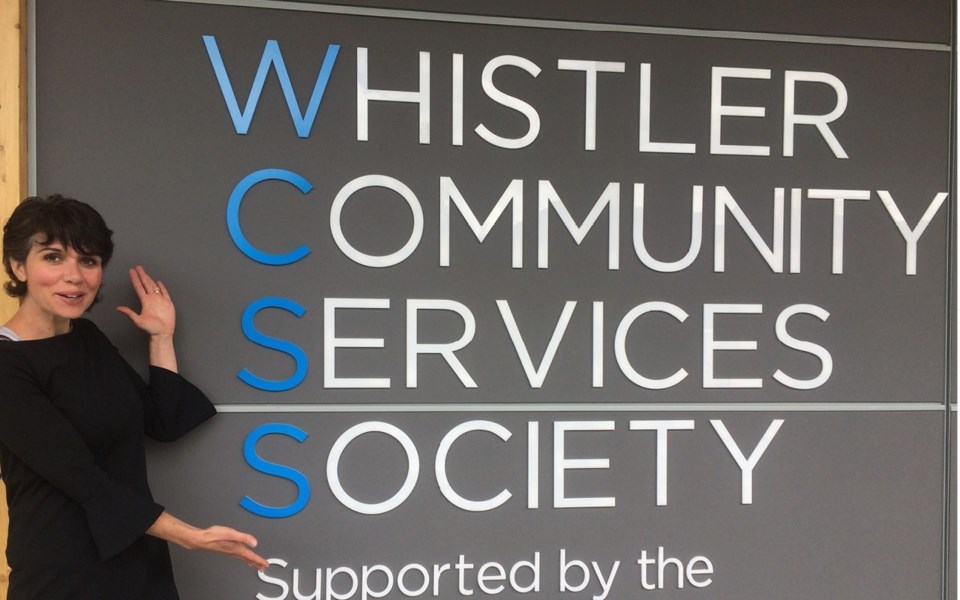Nearly two years into the COVID-19 pandemic, the need is still elevated at the Whistler Community Services Society (WCSS)—as is the level of angst from some in the community.
“We are dealing with a lot of individuals at this time that aren’t reasonable,” said Jackie Dickinson, WCSS’ executive director.
“It’s become quite hurtful, and that’s the hardest part, because it impacts our ability to do our work, and show up every day and be the best version of ourselves.”
The past two years have been challenging for everyone, Dickinson said, stressing the need for compassion.
“I think [having compassion] is very hard, and I think our store staff and our social enterprises and our teams, they continue to face a lot of difficult, challenging behaviour,” she said.
“And that is really tough.”
The team at WCSS has been on the frontlines of Whistler’s community response to the pandemic since March 2020, accommodating up to 1,400 visits to its food bank each month when restrictions were first put in place.
Visits to the food bank “levelled off” to about 500 per month this summer, Dickinson said—but that’s still nearly twice the pre-pandemic average of about 250 visits per month.
“This fall our numbers are starting to creep back up again,” Dickinson said, adding that WCSS is close to reaching a food bank fundraising goal of $50,000.
“Which we are very, very grateful for, but there is still a tremendous need in terms of fundraising for this program,” she said.
“But [$50,000] was our initial goal, and we’re really grateful to the community who have supported us to help us meet that goal. It’s been fantastic.”
You can donate cash or find ways to contribute to the food bank at mywcss.org.
Demand for in-person counselling at WCSS also remains high, averaging about 550 client meetings per month over the summer—double the pre-pandemic average.
“I think there is a lot of angst, I think that there’s a lot of unknowns,” Dickinson said, of what WCSS is hearing from residents.
“I think that we are still seeing a really strong need for mental-health support in the community, which is a sign of strength as I always say, but we definitely have quite a few people coming in to access subsidies for counselling support.”
Unsurprisingly, access to housing continues to be a “huge concern” in the community, Dickinson said.
“That idea that you could just find and secure a place, that maybe you can stay for a long time, it just doesn’t seem possible to new arrivals in our community,” she said.
“And that’s hard to think about.”
For its part, the WCSS continues to provide programs that it hopes create a “strong protective layer in the community,” Dickinson said, pointing to things like food bank delivery services, isolation programs for people who are COVID-19 positive, and even an “electronic community assistance” program to get technology into the hands of those who need it.
“All of those programs that we developed in response to COVID, they’re not anywhere near as high as what we saw in our peaks of our outbreaks in November and January and March of last year, at all, and that’s a good sign,” Dickinson said.
“We develop programs with the intent to make them obsolete. They’re currently not completely obsolete—there’s still usage for them, but it’s not indicative of what we saw at our most challenging times of COVID, so that is the good news story.”
As for the higher need in the community, WCSS isn’t waiting for the numbers to go down again, but rather adapting and responding to the new reality.
“If we just go in knowing that these numbers are going to be significantly higher from what we once knew, it’s now our responsibility to be accountable in the moment to provide the services that we think the community needs the most,” Dickinson said, adding that it’s also important to listen to the community about what its needs are.
“So that’s how we’re going to be guided, that’s how we’re going to make thoughtful, impactful decisions—not what’s in the best interests of organizations, we have to think about what’s in the best interests of our community.”




